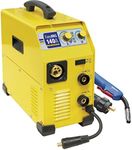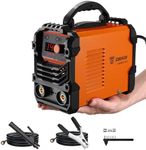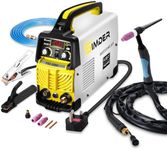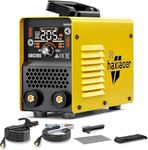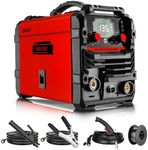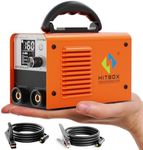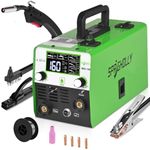Buying Guide for the Best Stick Welders
When choosing a stick welder, it's important to consider the type of projects you'll be working on, the materials you'll be welding, and your level of experience. Stick welders, also known as Shielded Metal Arc Welding (SMAW) machines, are versatile and can be used for a variety of applications, from home repairs to industrial projects. Understanding the key specifications will help you select a welder that meets your needs and ensures quality results.Amperage RangeAmperage range refers to the range of electrical current the welder can produce. This is important because different materials and thicknesses require different amperage settings. A welder with a wide amperage range is more versatile, allowing you to work on a variety of projects. For light-duty tasks, a lower amperage range (20-100 amps) might suffice, while heavier industrial tasks may require a higher range (up to 300 amps). Consider the thickness of the materials you plan to weld and choose a welder that can accommodate those needs.
Duty CycleThe duty cycle is the amount of time a welder can operate at a given amperage before it needs to cool down. It is usually expressed as a percentage of a 10-minute period. A higher duty cycle means the welder can run longer without overheating, which is crucial for larger projects or continuous welding tasks. For occasional home use, a lower duty cycle might be acceptable, but for professional or industrial use, a higher duty cycle is preferable to ensure efficiency and prevent downtime.
Input VoltageInput voltage is the electrical power required to operate the welder. Stick welders typically come in 120V or 240V options. A 120V welder can be plugged into standard household outlets, making it convenient for home use and small projects. A 240V welder, on the other hand, is more powerful and suitable for heavy-duty tasks, but requires a special outlet. Consider the power availability in your workspace and the scale of your projects when choosing the input voltage.
PortabilityPortability refers to how easy it is to move the welder around. This is important if you need to transport the welder to different job sites or if you have limited space in your workshop. Lighter, more compact models are easier to carry and store, making them ideal for hobbyists or those who work in multiple locations. However, more portable models might have lower power output, so balance your need for portability with the power requirements of your projects.
Arc StabilityArc stability is the ability of the welder to maintain a consistent arc during welding. A stable arc results in smoother welds and less spatter, which is important for achieving high-quality results. Beginners may find it easier to work with a welder that offers good arc stability, as it can help reduce the learning curve. Look for models that are known for their stable arc performance, especially if you are new to welding or working on precision projects.



